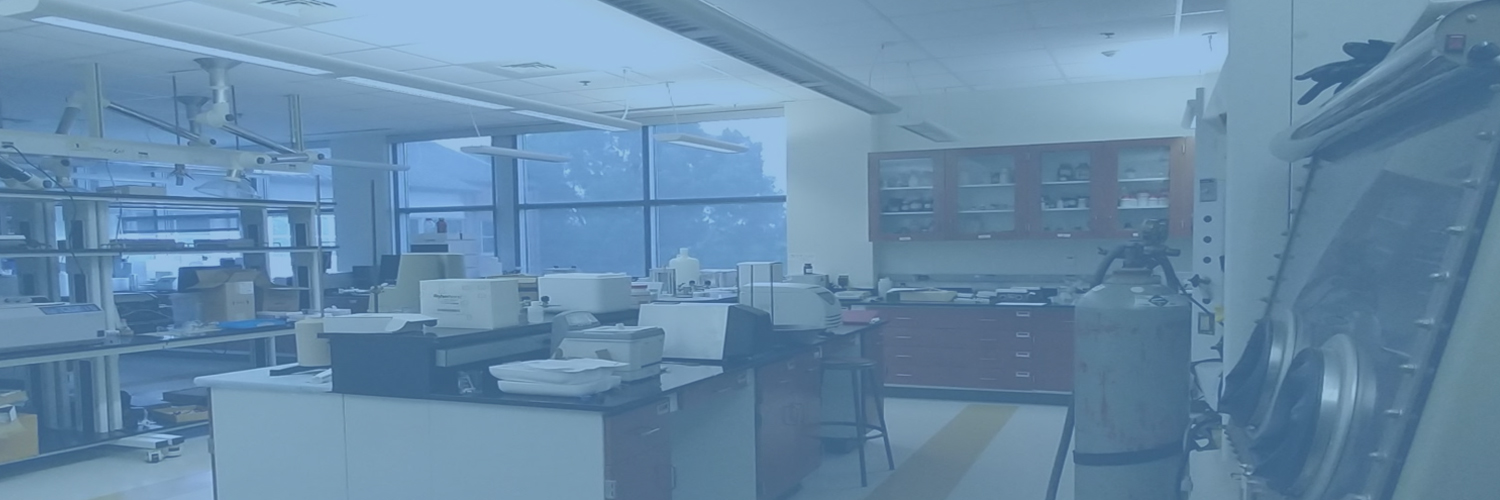

Students are required to present 5 written reports and give one oral presentation at the end of the semester. The course requires design of experiments by students in groups.
This is a newly developed course by Dr. Bo Wang
Student Learning Outcomes
• Determine appropriate ionization technique and instrument type for analysis
• Interpret, understand and critically evaluate mass spectrometry data
• Have an awareness of the principles of advanced mass spectrometry techniques
• Have raised awareness of mass spectrometry applications areas
Textbook
Main textbook: Mass Spectrometry, A Textbook, third edition by Gross, Jürgen H.
ISBN 978-3319543970 online ISBN 978-3-319-54398-7
Reference book: Introduction to Mass Spectrometry. Instrumentation, Applications and strategies for Data Interpretation by J. Throck Watson and O. David Sparkman. Fourth edition (2007), Print ISBN:9780470516348 |Online ISBN:9780470516898 |DOI:10.1002/9780470516898, John Wiley and Sons.
Course Description
CHEM 432. Quantitative Analysis II Lab: This laboratory course features the utilization of modern instruments such as ultraviolet, visible, infrared, and fluorescence spectrophotometers, chromatographs (gas-liquid and liquid) and nuclear magnetic resonance (NMR). We will draw our analyses from food products (determination of Fe in food, analysis of oils), pharmaceutical (determination of Fe in multivitamin and determination of analgesic compounds in tablets), and forensics (polymer identification), and healthy related studies (glucose test using NMR in synthetic urine).
Student Learning Objectives/Outcomes
Upon completion of the course, the student should:
Demonstrate practical knowledge of the principles and the use of photometry, spectrometry, and chromatography to determine analytes of interest in unknown real-world samples.
Course Description: This laboratory course emphasizes the basic principles of quantitative chemical analysis including measurement and preparation, titration, solubility and precipitation, spectrophotometric measurement, and separation. The newly revised labs will include daily life samples including the titration of Cola product for phosphoric acid, chlorine test in bleach, and environmental samples including water hardness tests.
Student Learning Objectives/Outcomes
At the completion of this course, the student should be:
1.Equipped with the basic principles of quantitative analysis;
2. Provided with the fundamental knowledge necessary to undertake further studies in the quantitative analysis and related areas;
3.Confident in undertaking a profession in which the application of quantitative analysis is required;
4. Prepared for future challenges where the use of quantitative analysis principles is required.
5.Promoted for critical thinking and problem solving skills through guided inquiry laboratory experiments.
Course Description
CHEM106: General Chemistry VI is a course which emphasizes basic principles and important theoretical concepts of chemistry. Topics will include atomic structure, electronic configuration, the wave mechanical model of the atom, chemical bonding, states of matter, chemical reactions including chemical equilibria, acids and bases, and electrochemistry.
Student Learning Objectives/Outcomes
1. Apply the principles and process of scientific inquiry in the analysis of real world issues or problem (General Education SLO)
2. Explain the major concepts and principles of chemistry, including concepts in atomic structure, periodicity of the elements, chemical bonds, types of chemical reactions, environmental chemistry, acids, bases, electrolytes, non-electrolytes, stoichiometry, conservation of mass, gas laws, heat of solution, endothermic and exothermic reactions, reaction rates, organic chemistry, analytical chemistry, and physical chemistry. Students should demonstrate competence and understanding in their ability to investigate:
a. properties of elements, such as atomic structure, periodicity of the elements, and chemical bonds;
b. chemical reactions, including types of reactions;
c. solutions, such as acids, bases, electrolytes, and non-electrolytes;
d. stoichiometry and conservation of mass in chemical reactions;
e. the study of the gas laws including the interrelatedness of properties of gases, such as volume, temperature, and pressure; and
f. energy conservation principles such as heat of solution, endothermic and exothermic reactions, and influence on reaction rates.
3. Understand the interrelationships among the sciences, and relate the major concepts of biology, the earth/space science, and physics to chemistry.
4. Apply appropriate mathematics to investigations in chemistry and the analysis of data.
Required Textbooks and Materials
Required Texts:Chemistry Structure and Properties; by Nivaldo J. Tro, second edition; Pearson
Required Materials:
• A scientific calculator (TI-30X or better) works best for many of the problems in this class. Bring your calculator to all classes. Please note that there will not be any sharing of calculators during exams and quizzes. Please note that programmable calculators may be checked by the instructors and memory contents dumped if cheating is suspected.
• Pencils and a black or blue pen.
• A three ring binder is required for handouts.
• Notebook for taking notes
© Florida Institute of Technology, All Rights Reserved